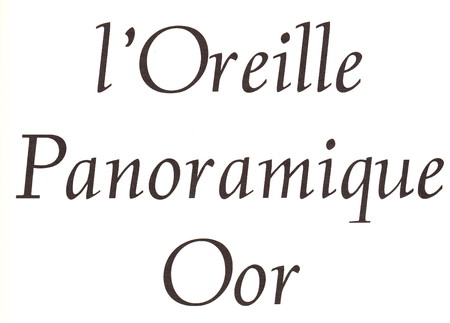Jacques Lacan (1901-81) tried to give Freud a contemporary intellectual significance, extricating his thought from the gloss of later commentators, and extending it in ways suggested but not achieved by Freud himself. The unconscious was not Freud's great contribution to European thought, but his discovery that the unconscious had a structure. That structure, continued Lacan, is a discourse that operates across the unconscious-conscious divide. Lacan's terminology is fluid, not to say elusive, but he adopts Freud's trinity of id, ego and superego. But Lacan argues that our continual attempt to fashion a stable, ideal ego throughout our adult lives is self-defeating. Certainly we can recognize a 'subject', ourselves, provided we remember that this centre of our being is not a fixed entity, but simply something that mediates our inner discourses. That 'subject' is made and remade in our confrontation with the Other, a concept which in turn shifts with context. The Other is the father within the Oedipal triangle who forbids incest. The Other is ourselves as we accept the restraints of adulthood. And the Other is also that which speaks across the schism we carry within ourselves between the unconscious and conscious — naturally: it is bound up with language itself.
Lacan's theories are difficult to grasp, but extend psychoanalytical thought in several directions. Lacan's unconscious is structured like a language, which gives language a key role in construction our picture of the world, but also allows the unconscious to enter into that understanding and dissolve essential distinctions between fantasy and reality. There are no primordial archetypes (Jung) or entities beyond the reach of language (Freud) or logical-sensorimotor structures (Piaget). As do other psychoanalysts, Lacan sees mental illness as a product of early childhood difficulties (notably imbalance between the Imaginary and the Symbolic) but children progressively gain a self-identity by passing through pre-mirror, mirror and post-mirror stages of development.
More importantly, Lacan's language referred to itself and was to be read by Saussurean semiotics. To the extent that Lacan sees language, and indeed all discourse, as permeated by the unconscious and so lacking in truth or stability, he is a Poststructuralist.
From his first work (De la Psychose Paranoiaque dans ses Rapports avec la Personalité: 1932), Lacan represented psychological illness as something manifested by the whole person rather than as a distinct pathology. Continuing this approach, Lacan adopted a style which resists any neat summary of concepts. His prose may often resemble the speech of his patients: a free association of ideas, meanings that change with context, and an unwillingness to group under broader categories. Lacan's concepts do not condense into doctrines. However confusing, the intention is to draw in and implicate the reader in the suggestions that Lacan is drawing from Freud's work and patient behaviour.
Lacan also had a trinity of his own: the Real, the Imaginary and the Symbolic. The Real is the unnamable, the outside of language. The Imaginary is the undifferentiated early state of the child, a fusion of subject and parent, which remains latent in adult life, manifesting when we falsely identify with others. The Symbolic is the demarcated world of the adult with its enforced distinctions and repressions. The unconscious is not simply reflected in the language we use, but is equally controlled by it. Discourse, including social, public language, shapes and enters into the structure of the unconscious, and is inextricably mixed with the unsatisfied sexual desire that emerges disguised in dreams, jokes and art.
Source: textetc.com


